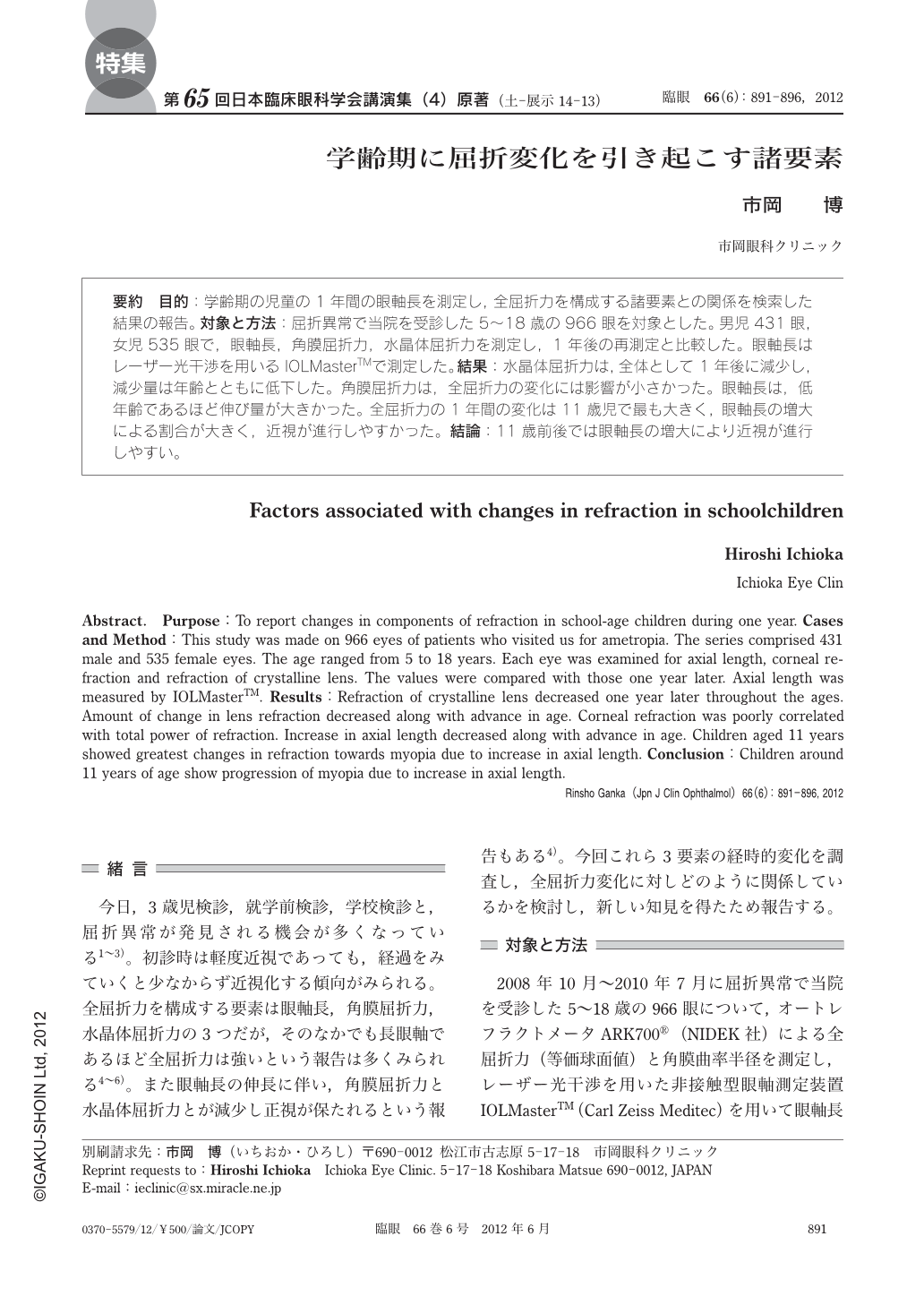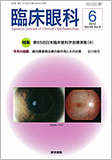Japanese
English
- 有料閲覧
- Abstract 文献概要
- 1ページ目 Look Inside
- 参考文献 Reference
要約 目的:学齢期の児童の1年間の眼軸長を測定し,全屈折力を構成する諸要素との関係を検索した結果の報告。対象と方法:屈折異常で当院を受診した5~18歳の966眼を対象とした。男児431眼,女児535眼で,眼軸長,角膜屈折力,水晶体屈折力を測定し,1年後の再測定と比較した。眼軸長はレーザー光干渉を用いるIOLMasterTMで測定した。結果:水晶体屈折力は,全体として1年後に減少し,減少量は年齢とともに低下した。角膜屈折力は,全屈折力の変化には影響が小さかった。眼軸長は,低年齢であるほど伸び量が大きかった。全屈折力の1年間の変化は11歳児で最も大きく,眼軸長の増大による割合が大きく,近視が進行しやすかった。結論:11歳前後では眼軸長の増大により近視が進行しやすい。
Abstract. Purpose:To report changes in components of refraction in school-age children during one year. Cases and Method:This study was made on 966 eyes of patients who visited us for ametropia. The series comprised 431 male and 535 female eyes. The age ranged from 5 to 18 years. Each eye was examined for axial length,corneal refraction and refraction of crystalline lens. The values were compared with those one year later. Axial length was measured by IOLMasterTM. Results:Refraction of crystalline lens decreased one year later throughout the ages. Amount of change in lens refraction decreased along with advance in age. Corneal refraction was poorly correlated with total power of refraction. Increase in axial length decreased along with advance in age. Children aged 11 years showed greatest changes in refraction towards myopia due to increase in axial length. Conclusion:Children around 11 years of age show progression of myopia due to increase in axial length.

Copyright © 2012, Igaku-Shoin Ltd. All rights reserved.


